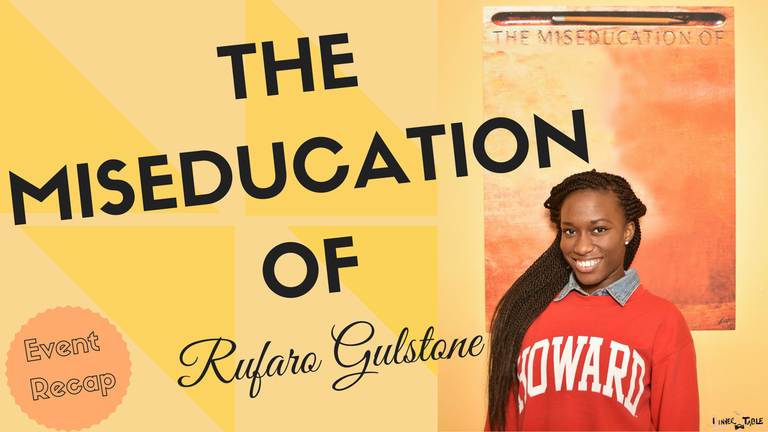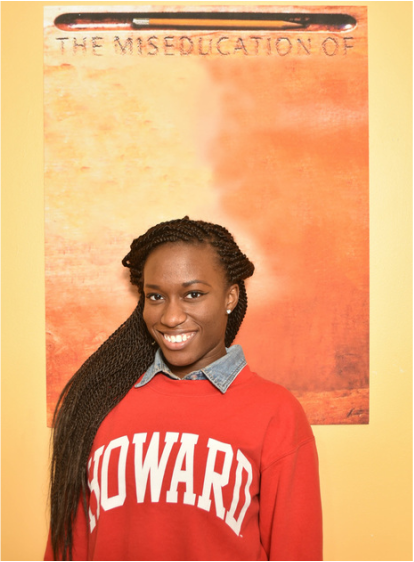|
“Almost all of the teachers at my school are white and they don’t treat me differently because of my race, I think they try ignore the fact that I am black and everyone else in my school is white which is a problem within itself .” On Presidents’ Day, The Dinner Table Documentary hosted an event entitled, “The MisEducation of Black Girls.” It consisted of a panel of young women of color who attended public, private and charter schools in New York City. “Almost all of the teachers at my school are white and they don’t treat me differently because of my race. I think they try to ignore the fact that I am black and everyone else in my school is white which is the problem within itself.” Hearing a young lady from the panel say that quote hurt my heart and instantly gave me flashbacks of my own complicated experiences. I have always been very cognizant of my relation to my peer groups. My awareness really started in middle school when I was immersed with other students who looked nothing like me. Suddenly, I had the opportunity to make friends with Latino, Asian and white kids. This was drastically different from the relatively small Afro-Caribbean elementary preparatory school I was used to. All my friends and I knew each other tenderly since kindergarten. Our parents and teachers knew each other extremely well and shared many similarities between their Guyanese, Trinidadian and Bajan cultures. Everyone was so close, in fact, it felt like I was almost losing family members when I graduated. Then I was thrown into a bigger, louder, tougher crowd that felt easy to get lost in. I naturally gravitated to what I was used to. I sought out those familiar brown faces again; the people who ate curry and jerk chicken religiously and knew what it meant when their parents cut their eyes and kissed their teeth at you. This was also my first time dealing with white authority figures. No one really had to tell me how to navigate relationships with white adults. As a black 11 year old girl, I was fortunate to get hip to certain nuances quicker than most. It was in the difference between how they chose to discipline the black girls and white boys for skipping classes. It was apparent in how they paid more compliments to a white Jewish girl who played the violin for the first time over the Asian boy who had been practicing since he was five. You could also notice it in how they would overlook the Hispanic boys who asked for extra math help to pander to the quiet white boy in the corner reading anime comic books. Unknowingly, this prepped me for the big leagues of diversity relations in high school. I attended a relatively small independent school tucked in between the busy streets of downtown Brooklyn. It was a tiny class of 30 students who journeyed from all walks of life. My class was almost overwhelmingly comprised of students of color. We clearly outnumbered our white counterparts by a little more than half. This isn't to say that my alma mater had no students of color, but they definitely did not have us in this volume, and especially not in the same class.
Then a curious thing started to happen. If you weren't paying attention, you would have almost missed the subtle nuances all over again. The questions rose from small whispers to loud nuisances. They ranged from the seemingly innocent: "How does your hair curl like that?”, to the overtly rude, "How can your parents pay for you to come here?", to the willfully ignorant and my personal favorite, "Why do all of you sit together like that at the lunch table?" In retrospect, it was almost comical. Some of the administration really had no clue how to handle or what to do with us. Diversity suddenly became a word that I heard 1,000 times a week. There were meetings between the students, teachers and administration all the time on how to cater, manage and interact with this new student population. There were rifts between the black boys and the teachers. An expressive bunch, these boys embodied what it meant to be "carefree" and were so grounded in themselves. They rapped, played ball, excelled in academics, were into fashion, photography and carried themselves with so much pride it made the white administration uncomfortable. We, black girls, definitely received similar negative attention especially when it came to our attire and how it flattered our bodies, as opposed to the positives in the way we expressed ourselves, did well academically, and developed into young adults who would soon become citizens of the world. Rufaro and high school friends. Photo Courtesy of Final Look Studios As a black woman who matriculated through private, public, independent schools, I’ve seen it all when it comes to how we are treated in our education system. Programs like the MisEducation of Black Girls are needed because they creates a sisterhood within a system that has not always been cognizant and accepting of the intersectionality of our blackness and womanliness. Being in a room full of women who understood and pledged to support and uplift each other filled my heart with pride and also reaffirmed my responsibility to empowering my sisters who need it the most. Written By: Rufaro Gulstone
0 Comments
Leave a Reply. |
Archives
May 2022
|




 RSS Feed
RSS Feed